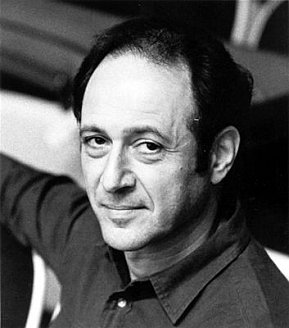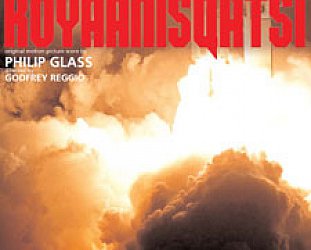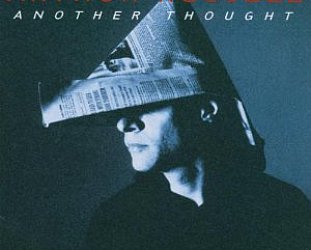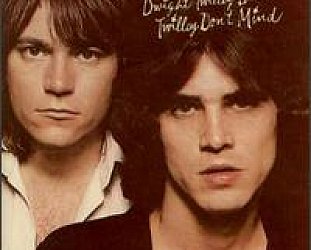Graham Reid | | 5 min read

American composer Steve Reich finishes telling of his new work – an enormous three-years-in-the making multi-media project – and then reflects on the austerity of his early music which enraged audiences two decades ago.
“Yeah, it’s easy to see backwards and how all these new things came from that early stuff – but it isn’t so easy to see forwards. Everyone’s got 20/20 hindsight.”
The distance Reich and his music have come is apparent all around him.
Where once he paid the rent by driving a Yellow Cab in New York he now sits in the bar of a five-star hotel talking of how he is co-commissioning the new work, The Cave, with money from patrons in Germany, France, the Brooklyn Academy of Music and the University of California.
“But we still need more,” he smiles – but seriously.
“I’m in a very good position now,” he says as he beings a free-flowing rapid fire conversation with the kind of word count only possible for a New Yorker.
“I figure on what I‘d like to do and then who’ll pay for it, I was asked by a well-known West Coast orchestra to write a piece for them but I don’t want to do that because I’m no longer interested in writing for the orchestra. I did a lot of that in the 80s and there will be a new recording of my Four Sections by the London Symphony Orchestra led by Michael Tilson Thomas. But the sensation of doing that – even though I think it’s the best thing I’ve ever done in that area – was like writing with one hand tied behind my back.”
He also points to the work Sextet which his group performed while at the International Festival of the Arts in Wellington in 1990. Like all his works since 1979 it too was a commission, this one from the French Government for a percussion festival and also Laura Dean’s dance company.
“The subtext was that I wanted to write a big piece with an almost orchestral range, hence the bass drums and bowed vibraphones which I hadn’t used before. It’s designed to be a major work to end a programme – a major work in a small package.”
Unfortunately it was a small package ensemble (“our smallest configuration – only eight of us”) which Reich brought to Wellington, largely as a result of the Australian festival promoters indicating they didn’t want him to bring a guitarist which would have allowed him to perform his most recent work Electric Counterpoint.
It also seems unlikely Reich will make it back to this part of the world again for some considerable time. The reason is simple, his current project, The Cave.
It is an enormous work involving five large three-by-four metre video screens, 20 to 24 live musicians and with a theme as sweeping and grand as any opera buff could wish for. But it’s not an opera, Reich emphasises, but rather “a new kind of music theatre.”
And when Reich outlines the theme of the work of which he has only written 20 minutes, the scale is both daunting and far removed from the austere Clapping Music and Piano Phase which opened his Wellington performance.
“The title refers to the cave in the town of Hebron on the West Bank where Abraham is supposedly buried. If you go there, which you should do with some caution, you’ll find it an extremely funky run-down place. Huge stone walls were built around this cage by Herod 2000 years after the death of Abraham, then in the 8th century the Crusaders came and put a church on it. Then in the 12th century the Muslims put a mosque over that.
“So the history of the area, like in so many other religious sites, is written in the stones.”
Reich points out the significance of Abraham’s two sons Isaac (the son by his wife Sarah) became the father of the Jewish people and Ishmael (his illegitimate son from the maid Hagar) became the father of the Arab peoples.
“That paradigmatic family friction still exists today – not from slave girls but ex-wives maybe – and is the underpinning of the political situation in the Middle East.
“To approach things there on a political or historical level is superficial; the bedrock of the problem goes back to the Bible and the Koran.
“Ishmael is a kind of code word among Jews for ‘that Arab in the street,’ but Isaac [which Reich pronounces ‘Eeshuck”] is ‘that Jew in the street’ for Muslims. So the repercussions of the texts are still there today.”
What The Cave sets out to explore is who these characters are today for people of the Jewish and Arab communities in the Middle East and, in the final act of the three act performance, what they mean in America.
Although still tagged with the label “minimalist” which refers to his early style of bare, repetitive and rhythmically based music, Reich has moved a long way in recent years. He sees his ’82 work Tehillim, a musical setting of Hebrew scriptures, as a breakthrough in bringing text back into what had become instrumental works.
For The Cave, Reich and his wife video artist Beryl Korot, are combining music, spoken word and video images.
The first act uses answers to simple questions about Abraham that Reich received when he talked to Jews in Israel; the second act takes those same questions to Arabs; the third act draws on responses from Americans.
“The questions are very much like a Rorschach test. Let me give you three illustrations. A religious guy, settler on the West Bank, very intense, and I said, “Who, for you, is Abraham?” Answer: ‘To tell you the truth, it is for me, my father.’ Great answer and great rhythm to his speech – ‘to tell you the truth,’ da-dada-da-da. Great.
“Second guy, museum curatorial type, same question. Answer? ‘A legendary figure, we know nothing about Abraham.’
“And the third, a Tunisian Jewish lady in a bright red dress who was a Cabbalist. Same question and she said: ‘A complete break, an unknown future’.
“Then ask that same question in America and people may very well say, ‘You mean like Lincoln?’ or ‘Are you serious?’
“So the work will be non-political inasmuch as it won’t take a position – we’re trying to avoid like the plague getting into a position like a recent author of Pakistani descent – but it will show two groups of people who have a living scripture and which are operative models.”
The visual component also adds to the resonance of the answers.
Referring back to the Cabbalist in the red dress he explains how that image is processed and re-projected in a slightly abstract way. The music parallels the speech patterns much as they did in his most recent work. Different Trains, which dealt with Holocaust victims, and Reich’s childhood memories of travelling on trains during the early war years.
Reich says he is working with stop-action sound and slow motion sound (“That will probably happen in the last section of the work – the American part – because that’s where the weirdness is, right?”).
“I’m a citizen and all sorts of stuff interests me. So as a composer I don’t want to write a thing where Abraham is a tenor or whatever – that feels superficial to me.
“The best thing any composer can do is perform their own work, whether that means playing drums or keyboards or even pushing the buttons on the videos.
“In the early stage only you know how it should go. You can send your stuff off to some ensemble with all the notation down then get it back and have to apologise to your professors about the quality.
“But people believe what they hear and either it’s moving or not.
“The best way to guarantee it represents what you are about to do it yourself.”







post a comment